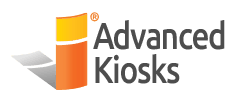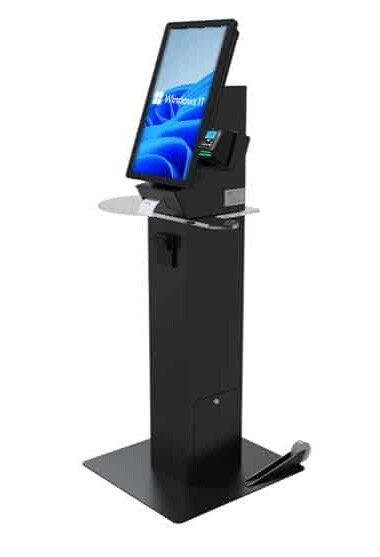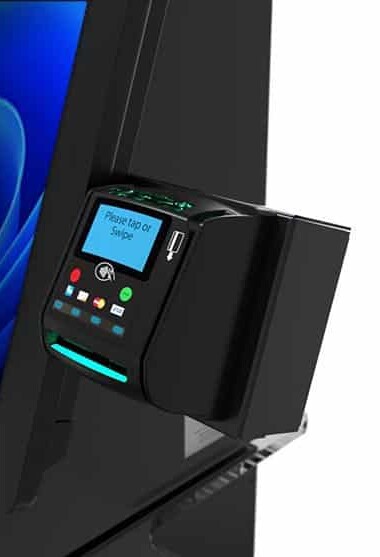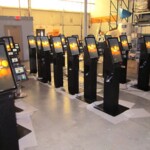Kiosk Model: Ticketing Kiosk
For Tickets, Labels and Receipts
P/N: H32-220-110
Our Ticket Kiosk makes it easy for your customers to quickly select, purchase and print tickets (or receipts) for entertainment such as movies, sporting events, concerts and amusement parks.
Popular uses for this kiosk also include self-service food and beverage ordering, parking, name badges and dozens of other receipt or label applications.
Visiting the Ticketing Use Case page for more details.
Use the Ticketing Kiosk to move your customers through lines more quickly so they can not only enjoy their event sooner, but also so they have ample time to continue exercising their purchasing power with you.
Kiosk Model and Use Cases
Why Choose the Ticketing Kiosk?
Fast Ticketing
Versatile Solution
Durable Design
Customizable Upgrades
Standard Features
- 3 inch wide Recipt Printer
- ADA Touch Pad
- 22″ LCD Touchscreen
- Acrylic Table, see drawing
- 14 Gauge Steel Enclosure
- Free-standing Base
- Powder Coat Finish
- Built-in Web Camera
- Quad Core CPU
- 8 GB RAM
- 120 GB SSD Hard Drive
- Amplified Stereo Speakers
- Surge Protection
- WiFi / Ethernet Connectivity
- Windows 11 Professional
- Easy Set Up Manuals
Resources
Download Brochure
Download Owner’s Manual
Download Dimensional Drawing
3 Year Warranty
GSA Contract Holder
Made in the USA






















